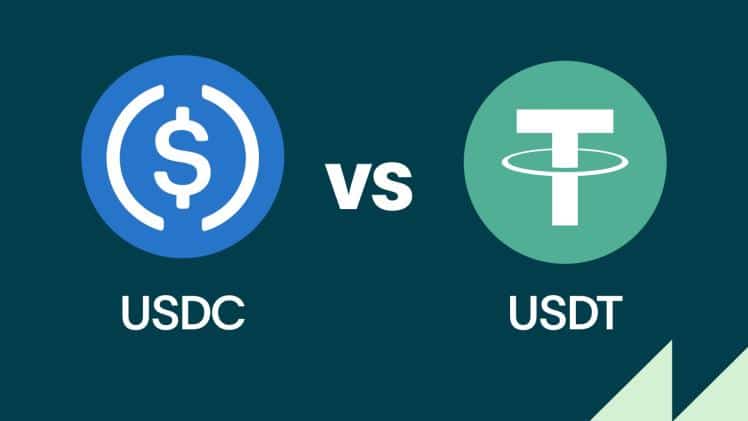USDC vs USDT: A Comparison of Crypto Dollars

Stablecoins have become a cornerstone of the cryptocurrency ecosystem by offering a digital asset that maintains a stable value relative to a fiat currency, typically the U.S. dollar. Among the many stablecoins available, two have emerged as dominant players: USDC (USD Coin) and USDT (Tether). These “crypto dollars” are used widely for trading, lending, remittances, and as safe havens during market volatility. While both aim to provide price stability, their differences in transparency, backing, regulatory compliance, and use cases make a thorough comparison essential for informed users and investors. Tools at https://bitcoin-mastery.app are useful for people who want to learn how AI can show patterns that humans might miss.
Understanding the Basics
USDT and USDC are both pegged 1:1 to the U.S. dollar and operate on multiple blockchains. USDT is issued by Tether Limited, while USDC is managed by Centre, a consortium founded by Circle and Coinbase. Both stablecoins can be used to transfer value quickly and efficiently across borders, avoiding the traditional banking system’s delays and fees. However, their similarities largely end at surface level.
USDT has been around since 2014 and was the first widely adopted stablecoin. USDC entered the market in 2018, promising greater regulatory compliance and transparency. This contrast in origin has contributed significantly to how each is perceived and used within the crypto community.
Transparency and Auditing
One of the most critical differences between USDC and USDT lies in how transparent each issuer is about their reserves. USDC has consistently prioritized transparency, providing monthly attestations from third-party accounting firms to confirm that each token is fully backed by cash or cash equivalents.
In contrast, Tether has faced significant criticism over the years regarding the nature and composition of its reserves. Although it has improved disclosure practices, questions have lingered about the proportion of reserves held in commercial paper, loans, and other non-cash assets. While Tether has issued more detailed reserve reports in recent years, it has not reached the same level of audit transparency as USDC.
This discrepancy affects trust levels. Many institutional users prefer USDC for its clarity and perceived lower risk. On the other hand, USDT remains widely used, especially on international exchanges where regulatory compliance may be less stringent.
Regulatory Compliance
Regulatory alignment is another area where USDC and USDT diverge. USDC operates under U.S. regulations and adheres to strict anti-money laundering (AML) and know-your-customer (KYC) guidelines. Circle, the issuer of USDC, has engaged with U.S. financial regulators and even applied for a bank charter, positioning itself as a leader in regulatory cooperation within the stablecoin space.
Tether, however, has had a more contentious relationship with regulators. It settled with the New York Attorney General’s office in 2021 over allegations that it misrepresented the backing of USDT and was fined $18.5 million. Although it has made strides toward better compliance since then, its historical resistance to scrutiny continues to influence how it is viewed by regulators and institutions.
Blockchain Compatibility
Both USDC and USDT are available on multiple blockchain networks, making them versatile and widely accessible. USDT has broader reach, existing on Bitcoin’s Omni layer, Ethereum, Tron, Binance Smart Chain, and others. This extensive presence has made it the default stablecoin on many global exchanges.
USDC, while slightly less widespread, supports Ethereum, Solana, Algorand, Avalanche, and a growing list of other blockchains. Its more measured expansion strategy has allowed it to maintain a strong focus on network security and compliance.
From a user perspective, both coins offer interoperability, although USDT’s broader adoption may make it easier to use on international or lower-fee networks like Tron.
Market Liquidity and Adoption
In terms of market capitalization and trading volume, USDT has maintained its position as the most widely used stablecoin. Its liquidity is unmatched, especially on non-U.S. exchanges, and it often serves as the base trading pair for a wide range of crypto assets.
USDC, while not as dominant in volume, has seen increased adoption in DeFi protocols, NFT marketplaces, and crypto lending platforms. Its integration with regulated platforms and its appeal to institutional investors have contributed to its steady growth.
The distinction between the two often comes down to user intent. Retail traders and users looking for quick, high-volume trading typically prefer USDT, while institutions and users concerned with regulatory clarity lean toward USDC.
Use Cases and Ecosystem Integration
USDC’s primary strength lies in its adoption within the regulated financial space. It is commonly used in DeFi applications like lending, yield farming, and staking. Additionally, USDC is often accepted by fintech firms and is used for digital payroll, invoicing, and cross-border payments.
USDT’s ecosystem is broader in terms of geographic reach and volume. It is the preferred stablecoin in countries with capital controls, inflation, or limited access to U.S. dollars. Because it is easier to acquire in many emerging markets, it plays a pivotal role in enabling financial access and remittances.
While both tokens serve as effective hedges against crypto volatility, their ecosystem roles continue to evolve based on regulatory environments and market demands.
Risks and Criticisms
Every stablecoin carries some risk, and neither USDC nor USDT is exempt. USDC is considered more transparent but is centralized and can be frozen by the issuer if directed by legal authorities. This feature, while beneficial from a compliance standpoint, has drawn criticism from privacy advocates.
USDT, on the other hand, faces ongoing skepticism due to its past controversies and lack of comprehensive audits. Though it remains stable in practice, critics warn that sudden negative news about its reserves could trigger liquidity crises on platforms heavily reliant on it.
Both stablecoins operate within a landscape of evolving regulation, and future rules could affect how they are used or held. Users should stay informed and understand the implications of holding either asset, especially for long-term storage or institutional use.
Conclusion
USDC and USDT are both instrumental in the functioning of the crypto economy, but they cater to different user needs and regulatory appetites. USDC shines in transparency, regulatory compliance, and institutional trust, while USDT dominates in liquidity, accessibility, and global adoption. Choosing between the two depends on the user’s priorities—whether it be ease of use, compliance assurance, or platform compatibility. As the stablecoin landscape continues to mature, both USDC and USDT will likely adapt and evolve, maintaining their central role in bridging traditional finance with the digital asset world.




